
AI, robots and recycling waste: how Recycleye is making a difference
It isn’t glamorous, but robots with AI make recycling more effective, which means the end results are also more valuable. Lee Grant interviews Zoe Cook from Recycleye to find out how it works
Hidden amongst the mountains of our discarded recycling waste is a technical revelation. AI-powered robotics are sifting through the things we throw away at a speed and accuracy rate unmatched by any human.
Running the machines is Recycleye, a young company whose mission is to modernise the unglamorous field of waste management with AI technology. Waste can be a high-value commodity and for the material recovery facilities (MRF) that have invested, Recycleye’s robots are already increasing the profit and purity of the stock sold to waste reprocessor sites all over Europe and the US.
Zoe Cook, Recycleye’s Technical Sales Manager, was kind enough to explain why AI is revolutionising the recycling industry and also share her expertise on some simple ways that your business can improve its waste management.
When we think about innovative applications for AI, recycling isn’t top of our list. Why does our recycling industry need AI?
It’s a very traditional industry. As a household, you put your recycling out and collections take that away to an MRF for sorting. Most [MRF] machinery is industrial, heavy and analogue that’s been around for years. The biggest innovation pre the AI machinery that Recycleye is doing was ten, 20 years ago, when people started using infrared with optical sorting to separate out waste. MRFs are still heavily reliant on manual labour, so it’s never going to be perfect and the MRF will lose a lot of valuable material.
How does Recycleye’s AI system improve on the manual aspect of waste management?
A typically Recycleye install works in two parts. The software controls a camera box and as the waste material passes underneath (on a conveyor belt), computer-vision detects and categorises each piece of waste.
Every system is unique to the client’s requirements. They communicate this information to the robotic arm that will pick out what it needs using compressed air. As the robotic arm is picking, the air jet system is opening and closing nozzles to either pick or eject based on what we’ve programmed it to do.
Our Recycleye system doesn’t just identify the materials that we want to pick, we’re identifying every material on that belt. On a milk bottle line, for example, some of what shouldn’t be there might be other polymer types or HDP-coloured bottles, which are often things like washing detergents or bleach bottles. You do not want that mixed in with your food grade level natural coloured milk bottles. We’re able to detect that and remove it.
The idea is to get that quality up as high as possible. Depending on material types, there are different purity requirements for what reprocessors require.
When a MRF sells a bale of sorted materials to a reprocessor, why is purity important?
Bales having lower purities means MRFs get less money and risk maybe not even being able to sell it on at all. At the end of the day, waste is a commodity. For households, plastic bottles and cans are waste, but once it gets into a sorting facility, that’s a valuable resource.
The whole process of recycling is very long. Waste material doesn’t just go from your house and turn up as a new product the next day, it moves around.
Let’s use a milk bottle as an example. It will go from the household to (potentially) a transfer station and then sent on to an MRF where it will be sorted. It then might be sent to a specific plastics reprocessor where it will be further sorted because plastics are not one material type and every polymer is different and you can’t recycle them all together. Then it would go somewhere to be melted down, cleaned up one final time and made into new pellets, which can be made back into the milk bottle.
Reprocessors will have processes to clean up, but that’s really that final couple of percent of impurities. They wouldn’t be able to cope with high levels of impurity, which means the bale gets rejected.
Why is AI better suited to waste processing than a human?
The robots don’t need a toilet break. Their productivity doesn’t diminish in the course of their shift. They can work 24 -7. A lot of facilities do already work 24 -7, but it allows facilities to get towards that without relying on manual labour.
If you’ve been to an MRF, they’re often smelly and not particularly nice places to be. The challenge for a lot of MRF managers is getting the people there. There aren’t enough people that are willing to do these jobs anymore, especially since Brexit and post-Covid.
I’d say the biggest success stories are really where clients have been able to move the individuals that they have working on the site around and upskill them into more interesting jobs, which kind of makes the whole process run more smoothly. If they see that something’s gone wrong in the plant, there’s someone available to go to that machine and fix an issue quicker.
There are always going to be things within the MRF that need manual labour, but the more we can automate the baseline sorting process, the more interesting those jobs become. As far as we know, no clients have had to lay off staff to put in our machinery.
So, AI automation is much better at doing jobs that humans no longer want to do?
Yes. The nature of the job means that people don’t want to do it. The average manual picker stays in the job for six months, which is very short. The cost of having to hire and train new staff is high. Many think it’s a low-skilled job, but I don’t think the average person would be able to look at a line, especially with plastics, and say what material type everything is. It takes training and the purity will decrease for having new people that don’t know what those materials are at the beginning.
How do you train the AI to detect similar material types?
The vision system is purely using the visible light spectrum, so our cameras will identify every item 30 times, plenty of time enough for the system to get it wrong and still have a good understanding of what that item should be. This is done every time we get a new material class. We will do a lot of data scanning by running through images of that material class and nothing else.
Let’s use the milk bottle example. These are all HDPE, which is the polymer type. We’ll scan loads of milk bottles, and our team of very intelligent machine learning engineers create a model based on that.
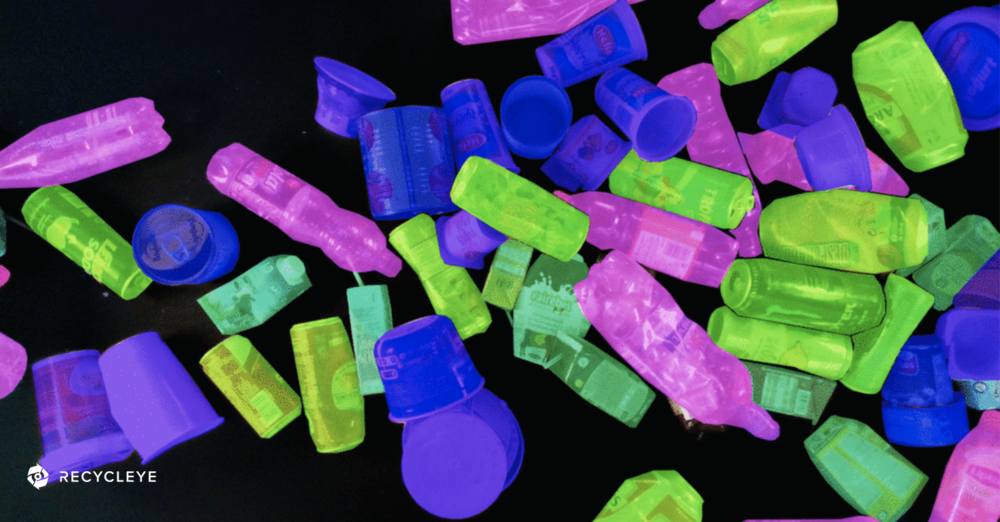
Obviously, the more data you have, the better that model becomes. Our database is something like four billion images and once our machines are installed, they’ll continue to collect data. It’s continuously improving by expanding our dataset and once the machine’s installed, the camera detects as object passes underneath.
Can your AI data be used in other ways?
The client is getting a compositional analysis of the line, which is useful for understanding their throughputs, their value output, and if there’s any fluctuations. For example, if you suddenly get a massive spike in the amount of film that’s ended up on this line, what’s gone wrong early in the plant? Why is film getting to this stage when we don’t normally get much? Has there been a change in what they’ve collected? Does that mean they need to adapt something in the plant? Data can be very useful depending on how the client wants to use it.
We see changes in consumer behaviours. Paper is a fantastic example. In the post-pandemic world, where everyone seems to have an addiction to Amazon, the amount of cardboard that’s going through any fibre processing facilities has drastically increased, whereas office paper, newspapers are all really on the downwards trajectory. MRFs need to adapt their plants to be able to deal with that and begin of predicting what future trends are going to be.
There is a lot of policy around that has a big part to play. For example, we are expecting collection of Tetra-Pak cartons to become mandatory from the beginning of 2025. Likewise, film will become mandatory to be collected from households and facilities need to adapt to cope with these materials.
One benefit of working with AI is that our machinery isn’t static. Traditional machinery does that one job. We can play around with ours, we can tweak it, we can change the model, we can change a recipe within a model based on fluctuations that we’re seeing.
How easy is it to add unknown products to the AI model and push the update to the many Recycleye installations?
We have a team of machine learning engineers. Let’s say a new brand comes out with a different type of water bottle. Most water bottles are PET natural, which means clear or light blue, and if it’s a similar shape to an Evian bottle, we are going to be able to identify it with no problem. If a company makes them circular and fluorescent orange, our algorithm will have no idea what that is. It will get flagged if we’re seeing it consistently and then we need to build that into the existing model class, which is a PET bottle, in which case we go through the scanning and model training process.
We need an internet connection to upload these images and push through any software updates we have. For the robot to run, it can run offline, but in the ideal scenario, we would have a stable internet connection. It’s something we’ll always check in our pre-sale visits while we’re auditing plants. We are doing a lot of work to make that the robot can run better offline.
Do you get any warning from manufacturers about materials they’re about to put on the market?
I would love to be able to say yes. This is an interesting topic. I think brands have little interest in the impacts of the process in changing material types. There are some good examples where brands do the right thing and it really helps the recyclers and reprocessor. A few years ago, Sprite bottles used to be green, right? Now, they’re clear. Clear PET is highly recyclable and in demand. Coloured PET, especially at the moment, has a low market value to the point that I know some aren’t even bothering to separate it and let that go to waste because it’s not worth it.
Another good example is Actimel who changed the polymer type, which meant that we just needed to go through and make sure that our model effectively renamed it from one polymer to the other. They also got rid of the label around the bottle and that’s great. We like single material products because that’s easy to recycle.
What are some of the toughest materials for AI to spot?
Bioplastics, in the recycling world, are the devil. Bioplastics look exactly like the material that they’re meant to be replacing. AI works like the human eye. If we can’t tell the difference between two objects, we can’t train a model to do so and you can’t train a manual picker to do it either. That’s very problematic when they get into the wrong waste streams. You don’t want those polymer chains to have a risk of being mixed, because that can be very damaging. The plastic wouldn’t be structurally stable and you wouldn’t be able to make a new product out of that.
They’re dangerous if they end up in the wrong places because it can ruin a whole batch of good material.
How many sites does Recycleye have?
We currently have 21 robotic installations. The bulk of our units are in the UK and Ireland, but we’re also present across Europe with installations in France, Belgium, Italy, Germany and Spain. We also have several installations in the US.
How successful is Recycleye’s AI with e-waste?
The future is expanding waste streams. Our whole conversation is about dry mixed recycling and we’re really looking to branch out. Our first installation in the UK was actually in e-waste and the future is to bring more of this technology and then expand markets in terms of waste types. Within waste electronics, there are a number of different categories and we’re looking at small domestic appliances, which is anything with a plug or a battery that isn’t under a certain size. I’d say from an electric toothbrush up to a vacuum cleaner.
I think it’s such an important area and everyone is guilty of having an old phone sat in a drawer. The precious metals in that device are vital to get back into the system and remain circular. A particular area of high value is circuit boards. The gold, the palladium, the copper. A whole wealth of different materials to be recovered.
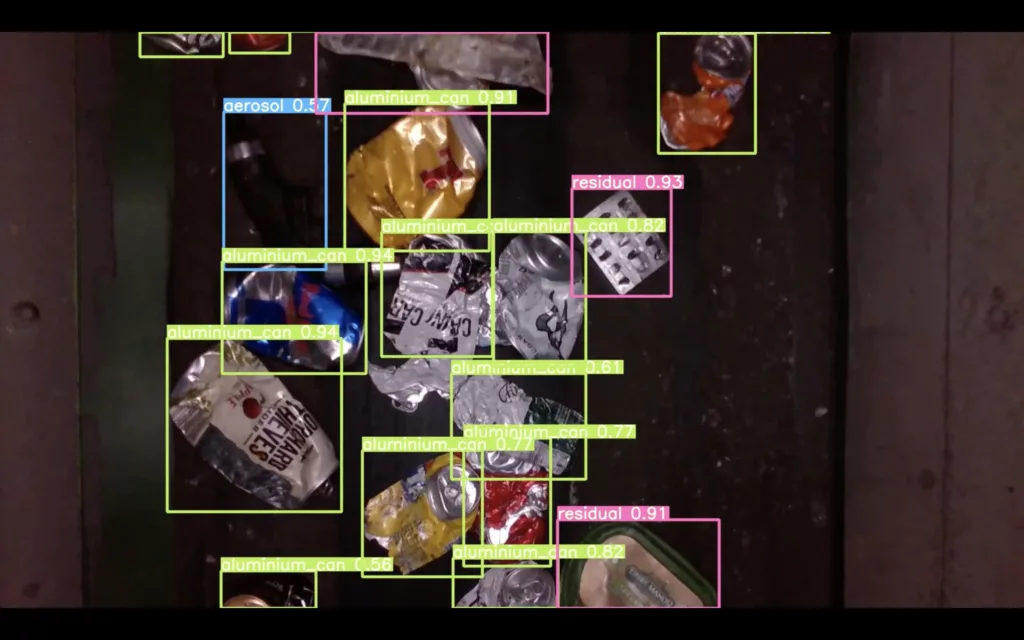
What’s also interesting with waste electronics is the fact that a lot of material is classified to be hazardous, a circuit board is certainly classified as that. Once the circuit boards are recovered, they’ll go for further reprocessing to remove harmful chemicals from the various precious metals, because if the chemicals got mixed into the aluminium stream, the smelters would have very low tolerance and that batch risks being rejected. Also, those PCBs would not be recovered at a second sorting phase, so it’s crucial to recover the items as early as possible, especially with something like precious metals.
Recycleye’s AI technology gives you such an insight into what we throw away. What are your top three tips for our TechFinitive readers to improve recycling in their workplaces?
Increase the general awareness as to what needs to go where. Most offices have recycling bins. They don’t want everything to end up in the black bag where the firm may pay landfill tax, so actively encourage people to use those recycling bins in the correct way and discourage wishcycling by not chucking anything and everything in.
Remember, the first step is to reduce before recycling. Use incentives and initiatives to promote avoiding materials in the first place. Having enough mugs out in the kitchen so that people don’t need to use disposable ones (as they’re largely not recyclable) is an easy win.
Finally, have signs above the mixed plastics bin to show what type of mixed plastics can go in. For example, you can’t put film in there as it’s not going to be recycled with your hard plastics. Just making awareness simple, so people don’t have to actively go and learn.
Read next: Meet Garby, the garbage bin for businesses
NEXT UP
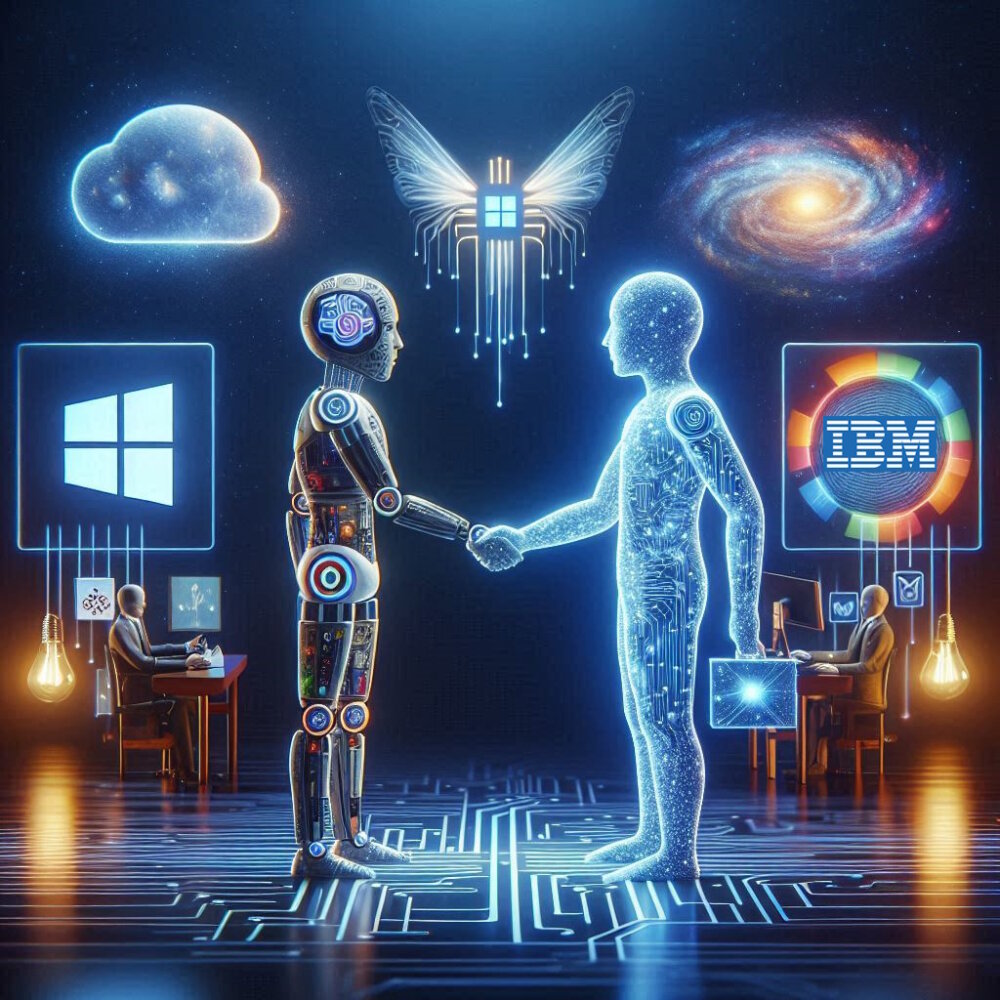
IBM bolsters AI push with Microsoft Copilot launch
In a bid to boost its AI offering, IBM Consulting will enable enterprises to create and manage AI copilots – including Copilot for Microsoft 365
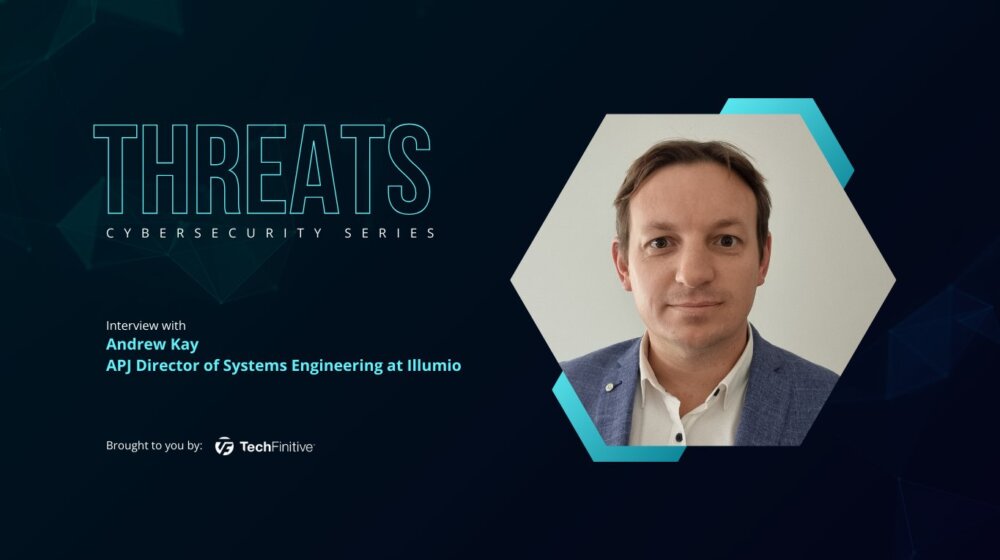
Andrew Kay, Director of Systems Engineering APJ at Illumio: “The most worrying development with ransomware is that it has evolved from simply stealing data to impacting IT availability”
Andrew Kay, Director of Systems Engineering APJ at Illumio, has 20 years’ experience helping organisations strengthen their cyber resilience. We interview him as part of our Threats series on cybersecurity.
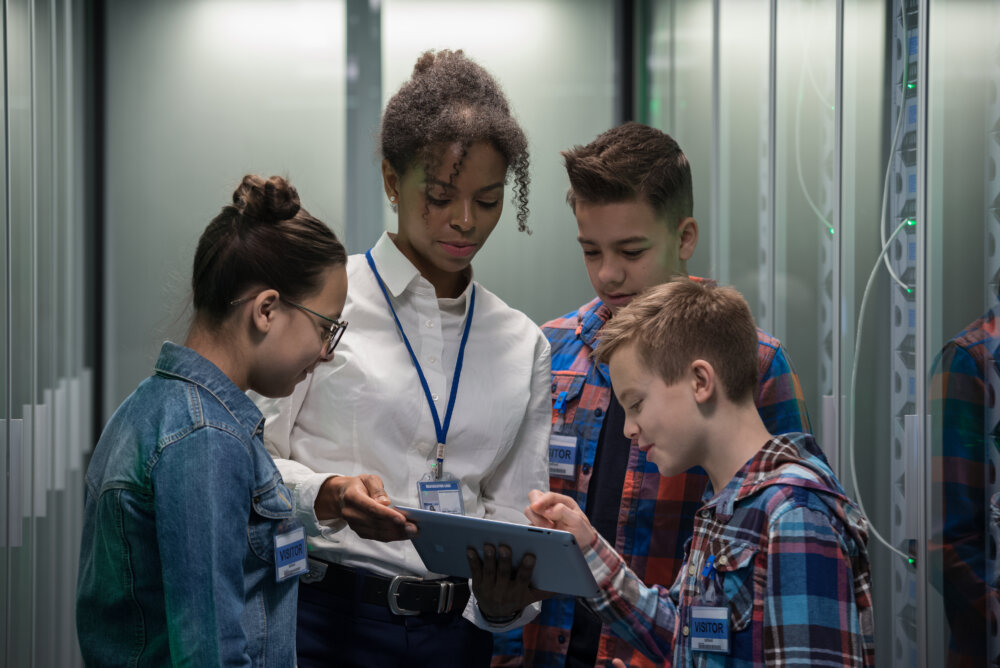
The imperative of making a career in the data centre industry attractive
Adelle Desouza addresses the problem of an ageing workforce in the data centre industry as well as how to make it an attractive career for new generations